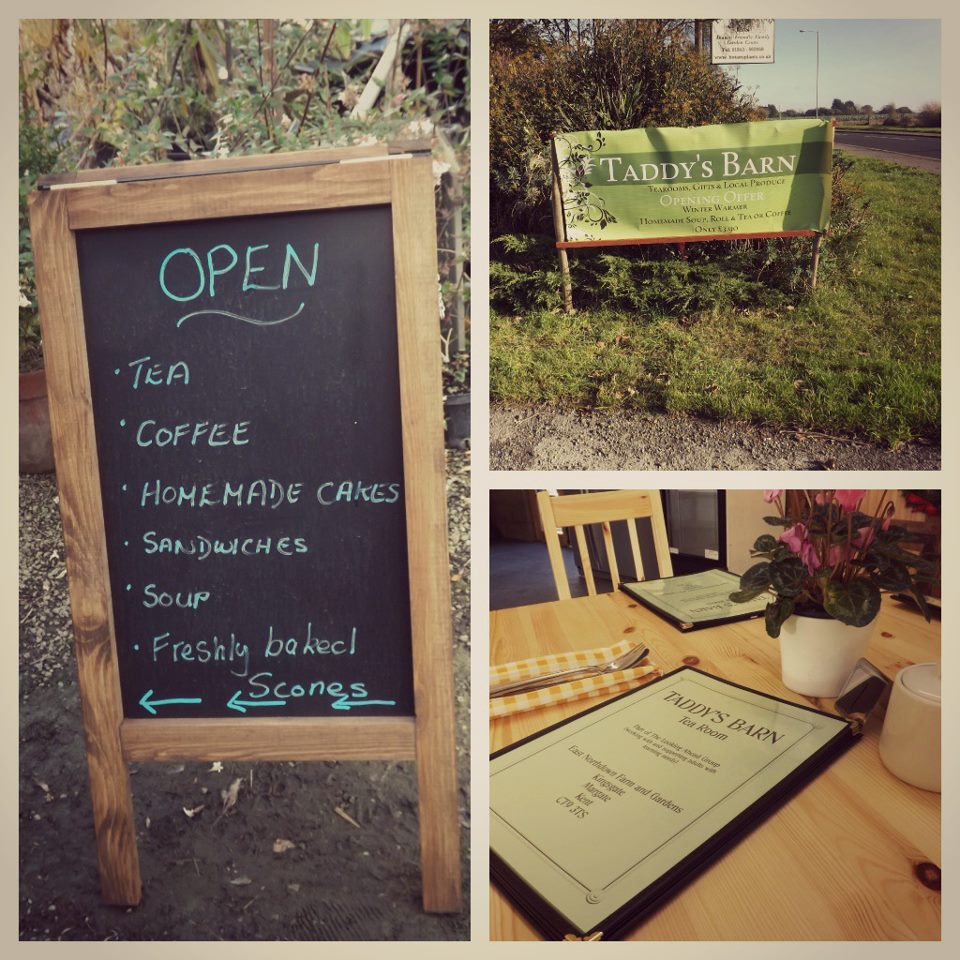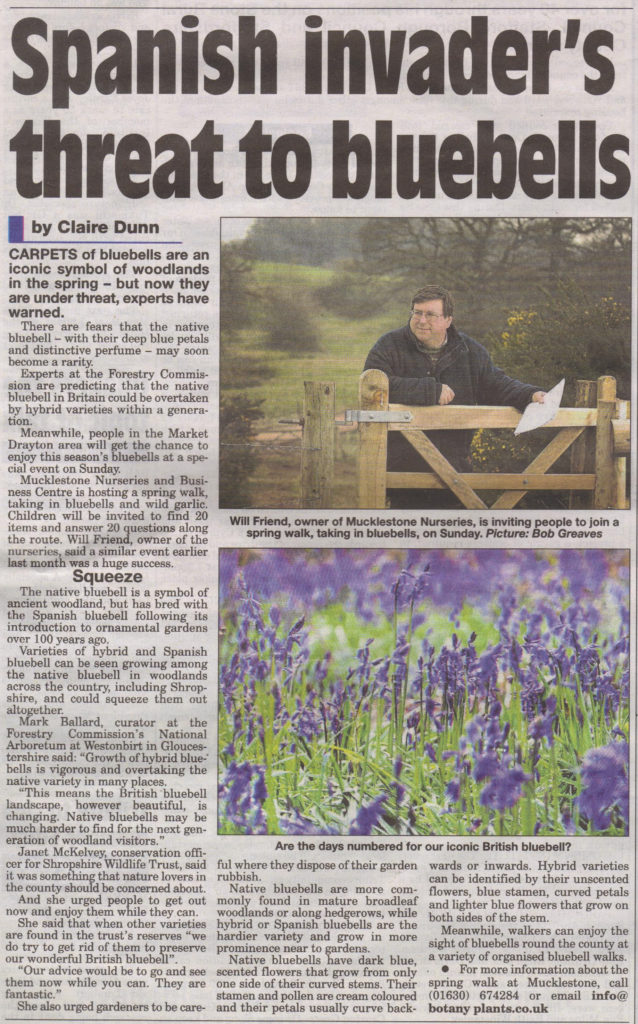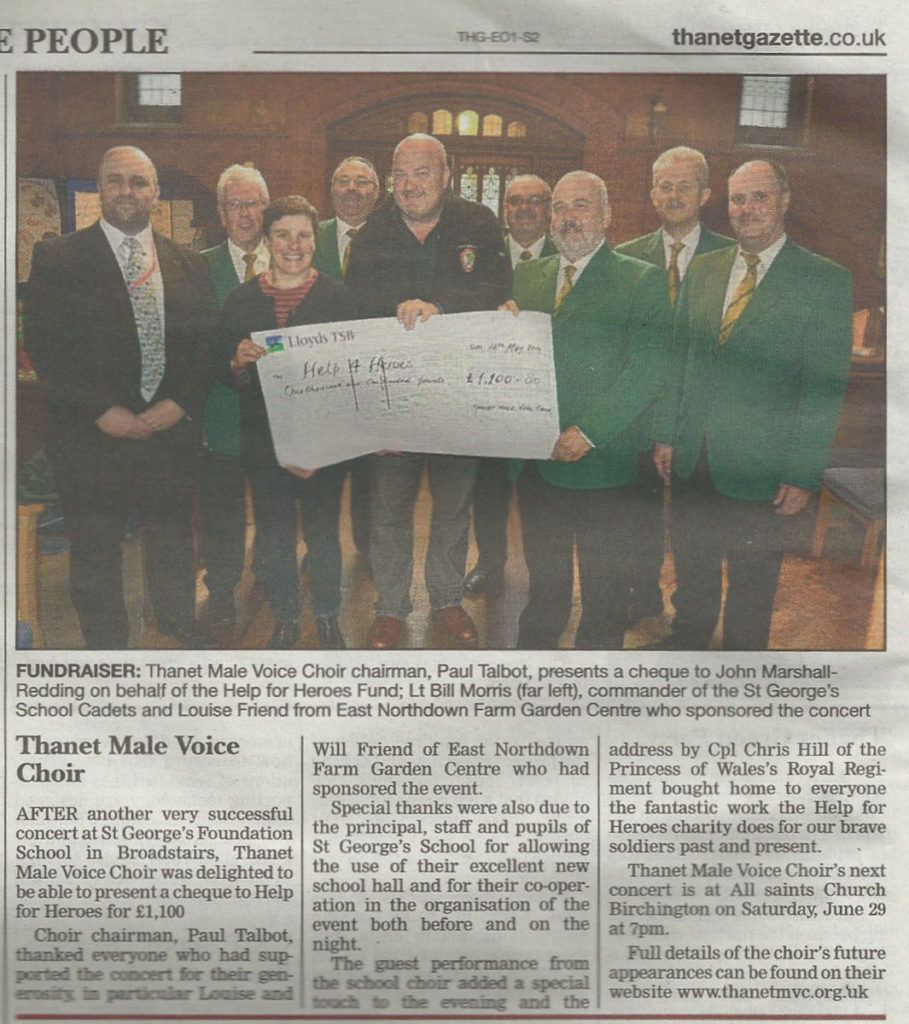
Author Archives: Douglas
Northdown and Friend Family History

Watercolour of Northdown (now known as East Northdown House)
by Richard Havel (painted 1800-1840)

Watercolour of Northdown House (Col Baker’s house) before it was extensively added to in the 1870s
Northdown House and the Friend Family
The Friend family was – and still is – one of a handful of inter-related Thanet yeoman farming families associated with Northdown: the other families being the Tomlins, the Sacketts and the Taddy’s. Time and time again, the same families inter-married. It was considered to be ‘unfair on the horses’ to go courting too far afield. With water surrounding Thanet on three sides, this led to repeated inter-marriages between the same families and of pairs of siblings marrying – Jane Austen style!
The Tomlin family
Northdown was the home of the Tomlin family (said to be a French name) and one of the oldest families in Kent. The earliest records are of a dispute over ‘Botany Bayfield’ (I farmed the field where ‘The Ridings’ development now stands) between two brothers, John and Thomas, upon their father’s death in 1440 (qu’est qui change?). The ruling went in favour of the younger brother that the inheritance should be divided equally according to ‘gavelkind’ of the Kent-Jutish tradition rather than the Norman ‘prima genitor’. Six generations later, John Tomlin (1600-1651) of Northdown and Updown (next to the present-day Pilgrim’s Hospice/QEQM Hospital), raised ‘train bands’ at his own expense for the Parliament during the Civil War. Thanet had a ‘low church’ parliamentary tradition more akin to the arable lands ofEast Anglia than the rest ofKent. John had six sons and five daughters, dividing the estate between his sons on his death led to the break-up of the estate coveringWest Northdown andEast Northdown. John Tomlin’s mother was Mary (née Sackett, of Sackett’s Hill).
The Sackett family
The earliest mention of the Sackett family is in a ‘subsidy roll’ of 1327, based in particular at Sackett’s Hill, St Peter’s. Through the 16th, 17th and 18th centuries the family produced a long line of Cambridge-educated vicars. A Stephen Sackett set off for Connecticut in 1628 as one of the very early settlers.
The tomb-stone in St John’s Churchyard, Margate of Richard Sackett the elder (1668-1730) records him as ‘Yeoman of Northdown’. His wife Martha having inheritedEast Northdownfrom her great-grandfather, John Tomlin (1600-1651). Their son was also a Richard (the younger 1717-1789) of East Northdown and Sackett’s Hill. Richard Sackett the younger’s daughter, Susanna (1749-1773), married Peter Cramp in 1769 who farmed Dane Court (next to Sackett’s Hill) as tenant. It was an ‘unsuitable match’, Susanna already being pregnant with a son (who later died). Susanna herself died only four years later, aged 24, leaving a daughter, Sarah (1771-1846), as Richard’s only grandchild. Richard’s wife died the same year, 1773. Following this double bereavement, he erected the imposing double tomb in St Peter’s Churchyard in their memory.
Sarah was brought up by her grand-father, Richard, at East Northdown. She married Robert Tomlin (1770-1850), her third cousin, bringing the Northdown land back into the Tomlin name.
Robert Tomlin was descended from Martha Tomlin’s brother, Francis (of Northdown) (1676-1732) whose son Francis (of Ash) (1714-1751) married Anne Minter of Moat Farm, Ash. Richard Sackett (the younger) died in 1789, just one month after Sarah’s wedding thus securing the future of Northdown within the Tomlin/Sackett family.
During his lifetime, Richard Sackett (the younger) built up his property substantially, reuniting much of the Tomlin land of his great-grandfather: He purchased Dane Court in 1759 (219 acres) next to Sackett’s Hill (100 acres). At East Northdown, he owned Sackett’s/Home Stall Farm (103 acres) – now much of Northdown Park – and purchased Fell’s/Yorkshire Farm (40½ acres) – now ‘The Spinney’. The two West Northdown farms were purchased off Tomlin cousins, Omer Farm (127 acres) and Tomlin Farm (59½ acres).
All this was left to Robert and Sarah Tomlin in Richard Sackett the younger’s will in 1789, to be divided between their children. They also lived in East Northdown House, although Richard had intended them to move into the larger ‘Dane Court’.
Robert and Sarah Tomlin had one son, Robert Sackett Tomlin (1790-1868), and four daughters, Ann (1801-1877), Harriet (who never married), Jane and Sarah. Jane and Sarah married two brothers – their Tomlin cousins from Ash – James Tomlin and Thomas Minter Tomlin, whose mother was Susanna (née Taddy). Robert Sackett Tomlin was one of the main benefactors of the then ‘new’HolyTrinityChurchinMargate.
Ann Tomlin married George Friend (1790-1831), who was killed in an accident, leaving her with one surviving son James Taddy Friend (1827-1909) of just four years old. She lived opposite her parents in East Northdown Farmhouse (where I now live). This was not part of the original ‘Sackett estate’ but was probably acquired at around this time for her. Thus young ‘Taddy’ was raised atEast Northdownas the protégé of his grandparents just as Sarah, herself, had been raised by her grandfather.
The Taddy family
James Taddy (1710-1764) was another Thanet yeoman farmer , based at Street Court ,Westgate, with land stretching towards Westbrook, Hartsdown and Margate. He had two sons,. Edward (who married Mary Friend) and James ,who was an extremely gifted businessman and entrepreneur. He founded a successful tobacco and snuff ‘empire’. Neither brother had any children. However of their three sisters:
Susanna, married William Tomlin of Ash, who were the parents of James Tomlin and Thomas Minter Tomlin who married their Northdown cousins Sarah and Jane, aunts of James Taddy Friend;
Mary (1753-1817), married John Friend of Brooksend and was the mother of George Friend , grandmother of James Taddy Friend.
& Ann who married John Hatfeild from Norwich, who lived at Hartsdown House – Hatfeild is spelt with an ‘ei’ as it derives from ‘Hauptfeld’- literally meaning ‘high(or main/home) field’ in German.
The three sets of cousins ran the tobacco business until the 1920s when it closed during the General Strike never to re-open. The business made many innovations including being one of the first-ever pre-packaged goods and the first cigarette cards. The original premises were in ‘the Minories’ , near the Tower of London, and later moved out to the ‘snuff mill’ at Morden Park, south London. Sealed Stone jars of snuff were shipped out around the empire, particularly to Australia.
James Taddy (the Younger) was probably Margate’s greatest-ever benefactor, as well as passing the business to the children of his three sisters , he endowed a range of charities and good causes , such as ‘ Taddy’s Bounty’ for Margate’s retired seamen and farm-workmen and their widows. In particular he was the founding father the Royal Sea Bathing Hospital at Westbrook, where his portrait hung by the front door until its closure in the 1980/90’s.
The Friend family
The Friend family are another long established Thanet family, mainly Birchington, recorded back to Daniel Friend in the 1500’s. Family tradition is that the name Friend derives from ‘fremde’ meaning strange or foreign and that they were Jutish followers of Hengist and Horsa settling in Thanet in the 5th century. The Friends were, in turn, related to other Birchington families such as the Crispes of Quex Park and the Neames. Generations of John Friends (and the odd George) farmed at Great Brooksend Farm, Birchington which, then as now, was owned by the Church. The family was granted a charter and the title of Gamekeeper to the Archbishop of Canterbury , in the parishes of St. Nicholass and Minster hence the Friend-family crest of the greyhound. One ‘John Friend’ was hung, drawn and quartered during the time of King Charles I for being a ‘black protestant’ and dissident. As with the Sacketts , members of the family left for Massachusetts at the time, where the name Friend still persists and is considered among to be oldest of the American nation’s original founding ‘Brahmin’ families.
John Friend the younger of Brooksend (1753-1817) married Mary Taddy. They had three sons: James of Birchington Place (1781-1819) whose son, also named James, owned and ran a sugar refinery in the East End; John of Brooksend (1787-1858); and George (1790-1831),who lived in Clapham and was in the Taddy Tobacco business. George married Ann Tomlin of East Northdown and was father to James Taddy Friend (1827-1909). George Friend was killed in a tragic accident –when his ‘phaeton’ overturned on Clapham common, leaving his wife, Ann and four year old son.
Just as Sarah Cramp had been raised by her grandfather ,Richard Sackett, at East Northdown, so too, James Taddy Friend was raised by his mother Ann (née Tomlin) at East Northdown Farm House, living across the land from his grandparents Robert (1770-1850), and Sarah Tomlin.
‘Taddy’ Friend was the heir to East Northdown , from his his mother, his maiden aunt Harriet Tomlin, and two childless Tomlin uncles and aunts. His uncle Robert Sackett Tomlin inherited Dane Court. Also , from his father and two Tomlin uncles he inherited the main share of the successful Taddy’s tobacco business. With these resources he was able to re-consolidate the old Tomlin/Sackett estate at Northdown – as the Hatfeild cousins did with Hartsdown.
‘Taddy’was 23 in 1850 when his grandfather died. Mother and son ran the estate together for a further 27 years until her death in 1877. They set about extending the estate and building a suitable mansion. They purchased Northdown House from Colonel Baker, himself a distant Tomlin relation. They also acquired Mr Blackburn’s house across the road, which brought with it the land that lays either side of the present-day Northdown Hill. This was around the 1840s.
James Taddy Friend’s first wife, Frances Sweyn, died in 1874, with no children. He then married Mary Stewart Irvine who bore him six children in seven years from 1879-1886! She was from the Aberdeenshire family from Drum – reputedly descended from Robert the Bruce’s barber and standard bearer. ‘Taddy ‘Friend and his wife were very prominent local figures. He was master of the goldsmiths company in London and high sheriff of Kent. And keen supporter of a whole raft of local good causes and institutions , such as the Margate Lifeboat.
Northdown House
The original house was a square Georgian building, facing west as now. The north extension facing the sea was built first housing the reception rooms, probably prior to his second marriage, followed by the south extension built as a nursery-wing as the family expanded. The original house lay on theMargateroad (broadly along what is nowNorthdown Park Avenue/George Hill Road) which ran in a straight line along the south of the house. To allow for the expansion of the house, Mr Blackburn’s farmstead was demolished and the road diverted along its present course and a high flint-wall built enclosing the parkland.
St Mary’s Chapel was built for residents of the estate in 1893. The chapel was left to the Diocese in James Taddy Friend’s will. The surrounding land being gifted by my father and his sisters for the re-building ofHolyTrinityChurchin the current position in the 1950s.
Following James Taddy Friend’s death in 1909. As with so many other great family houses, the halcyon days of the Victorian and Edwardian eras were shattered by the First World War and its consequences. As with John Tomlin’s Northdown estate 250 years earlier, the property was broken up between his six children (and the tax man!) : four boys (George, ‘Reggie’, James and Arthur) and two girls (‘Freda’ and Maude). All four brothers served in The Buffs (East Kent Regiment) in the First World War. George, the eldest, was killed in action in 1915 near Plœgsteert, nr Ypres (‘Plug Street’ ) in Belgium, aged 35, leaving a son, Geoffrey, who later emigrated to Kenya. ‘Reggie’ received a DSO, he inherited ‘West Northdown’ including Mill mead, Holly lane, Omer Farm and all the land to the west of what is now Princess Margaret Avenue. He lived at ‘Duck Pitts’ in Bramling,Canterbury: a large house now used as offices. The land which he inherited was eventually sold off piece by piece. His family moved toSomerset. ‘Freda’ married and lived in Hay-on-Wye, eventually returning to the area to live inLanthorne Road, Broadstairs, as a widow. Maude never married and lived at East Northdown House and latterly in Lawn Cottage; she was one of the first lady magistrates in the country. James Irvine Hatfeild Friend was my grandfather. He was known as ‘Irvine’. During the First World War, he served on the Western Front (where he was awarded the Military Cross) and at Gallipoli where he specialised in making home-made bombs. After the war, he went toWrittleAgriculturalCollege. He inherited Northdown House and park, together withEast Northdown. He lived in Northdown House, where my father and his four sisters were all born. Arthur(also an MC) was a full-time soldier rising to the rank of General. At the fall ofFrancein 1940, he was trapped at St Valery and put to sea in a small fishing boat. He was picked up ten days later drifting in the Fastnet approaches. In the family tradition, he married one of his Taddy/Hatfeild cousins.
‘Irvine’, my grandfather, was known locally as Captain Friend, his First World War rank. Like all the generations before and since, he was a passionate farmer and countryman personally growing all the trees along Northdown Hill,Northdown Park Avenueand Reading Street Road from acorns etc and planting them all out. He was a tireless doer of ‘good works’ – probably to the detriment of his own affairs – on projects such as the building of theMargateHospital. He married Louie Cowley who was born inMadras; her parents served with the Indian Army and stayed on after independence in 1947. She was from a prominent military Anglo-Irish.
The high inheritance taxes and the collapse of agricultural commodity prices in the Great Depression led to heavy financial losses. ‘Irvine’ struggled on as best he could, mindful of how many families depended on the Northdown estate for their homes and livelihoods. Finally, he sold land to Sidney Van de Bergh, the developer of ‘Palm Bay Estates’ who purchased the land stretching from East Northdown to the sea. The price was agreed at the bottom of the market and was to be paid in instalments. In fact, money was not paid until the 1950s – because of the war – at 1930s prices!
Northdown House and parkland was put up for auction but did not sell. A deal was struck with Margate Corporation. The house, outbuildings and parkland were sold to the Borough Council for the legal expenses incurred of about £50, subject to ‘the property’ being ‘laid out and forever maintained as an open space and public park’ with no new buildings to be built except ancillary pavilions, tearooms, etc. A further sum was reimbursed to Sidney Van Deburgh for the option he had taken to buy the house. The two cottages were intended as ground-keepers cottages and the house to be used for reading rooms, etc. Attempts were made in the 1970’s and around 2008 , to dispose of the properties in the park by successive council administrations , but on each occasion has been met by a massive groundswell of public opposition.
My father, Irvine James Cowley Friend (known as ‘Bobby’) was born in 1923. His great friend and Taddy-cousin was Aubrey Hatfeild, a celebrated First World War pilot and my father’s godfather. Aubrey Hatfeild too saw the family estate at Hartsdown – James Taddy’s original home – given over to the town, for the same reasons as his older brother Capt Charles Eric Hatfeild was killed in action inFrancein 1918, aged 31. Aubrey Hatfeild continued farming on the family land at Hengrove where Jonathan Tapp, his grandson, now farms and has recently bought back the land.
My paternal grandfather, Capt James Irvine Hatfeild Friend (known in the family as Irvine), was also a trustee of the Quex Park estate during Major Powell Cotton’s long safaris abroad and was also Christopher (‘Kit’) Powell Cotton’s godfather. ‘Irvine’ was responsible for securing a tenancy at Somali Farm, Quex for his retiring Northdown farm-bailiff, Sidney Linnington, who was originally from theIsle of Wight.
My grandparents, my father, his four sisters , Mary, ‘Jean’, Sheila and ‘Annette’ moved into East Northdown Farmhouse for a brief period around 1937. My father loved being on the farm with the cows, goats, ducks, geese, ferrets, etc. But for Mary, the eldest of his sisters, it came as a big shock as she returned from boarding school, having not been told of the move from Northdown House. Shortly afterwards, they moved away to a beautiful house at Skeete, near Lyminge, during the war years and East Northdown Farm was let to the Steed family, who also farmed the Palm Bay Estate land as it was gradually developed over the next 50 years.
My father, Irvine(known as ‘Bobby’) also shared the family passion for farming. He was unable to join the Army due to ill-health so read agriculture during the war with Professor Hammond (an animal-breeding pioneer whose work started the field of IVF, ‘the pill’, AI, etc) then joined the Ministry of Agriculture (the ‘war ag’) as an advisor on the Isle of Wight. After the war, he set up the world’s first AI breeding programme in British Frisian cattle for the Milk Marketing Board, before moving to Staffordshire to start farming on his own account until his death in 2003.
Mary served in the Auxiliary Territorial Service during the Second World War landing in Normandy about a month into the campaign. She served with the Military Police and was there when they entered the Gestapo headquarters in Brussels, at the liberation of Belsen . She met her first husband, Robert Flach (whose mother was Jewish) serving in the Australian army , having left Vienna in the 1930s. She died in summer of 2011.
Louie (known as ‘Jean’) had a passion for animals, keeping goats and ferrets as a child. She married a stockbroker and lived the ‘good life’ at Knockholt until her death in 1982.
Ruth (known as ‘Annette’) married Tim Creasey who was from a naval family but joined the Army as a Private as he was colour-blind and the Navy would not take him. He rose through the ranks to become General commandingNorthern Ireland, thenC-in-CUKland forces. ‘Annette’ followed him round moving house every couple of years. As a passionate gardener, she started again from scratch each time. Finally, under threat from the IRA, Tim accepted the offer of the Sultan of Oman to go back as his Chief of Defence. He was an intimidating figure; a ‘soldiers general’ who made it his business to always keep his ear to the ground. He could speak to his Baluchi, Persian and Arab soldiers. Throughout his career, he was never far from the action. Annette died in early 2012.
Sheila was the youngest of my father’s four sisters. She married twice and has joined her daughter’s family in New Zealand.
I returned to Northdown in 1985; fifty years after the Friend family had left and fulfilling my father’s hope that one of the family would carry on living and farming at Northdown. It is a privilege to benefit from such a rich historical legacy and be able to look back over the ups and downs of past generations.
William Friend
With acknowledgements to Dane Court written byPeterHills and to the website www.sackettfamilyassociation.com
Thanet’s New Community Farm
Thanet Gazette 2012 – Local Farmer, Will Friend is planning to open up his Farm and Nursery at East Northdown along similar lines to TV hit show River Cottage where old and young alike can ‘get their hands dirty’ and learn about growing produce …
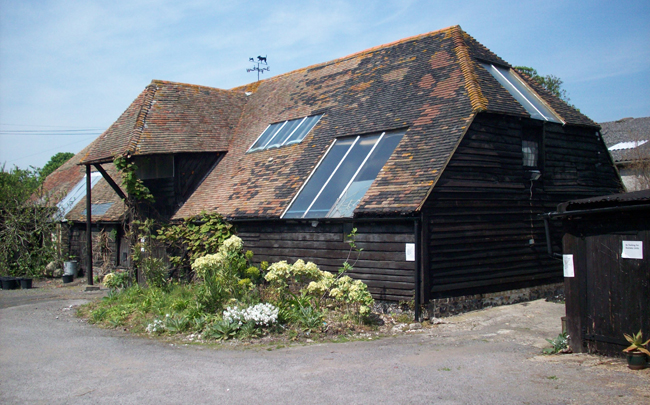
Mr Friend has been running his farm, nursery and farm shop for 25 years this year. He is a the leading local expert on all things ‘green’ : to do with plants, farming and the countryside. The area also has large communities from Cypress , Italy, Iran and Turkey who all come to the farm to keep in touch with their rural roots. William specialises in Mediterranean plants, Thanet’s mild dry climate is the best in Britain for growing figs, vines, apricots, walnuts, bay trees and quinces (a key ingredient of Persian cookery). “The Romans felt at home in Thanet 2000 years ago and brought their plants with them. We grow pomegranates and olives too, but the seasons are too short for them to bear fruit”
“We have a resource here at the farm which is not being made the most of.” He said: “We are in talks with a charitable trust who specialise in training young adults with learning difficulties in employment and general life skills. The Trust already runs centres around the country, and are looking for a suitable site in Kent. We have plenty of space here where they can grow fruit and vegetables, help keeping up the gardens and grounds, and take over the running of the farm shop and tea room , so visitors can enjoy home grown produce and home cooking. We also have the business centre with a huge range of different crafts and skills on site to draw on. We are building up a network of people who will hopefully operates a range of other complimentary activities.
William is the grandson of former Northdown House owner James Irvine Hatfeild Friend-who was know as ‘Irvine’ , or by his WWI rank of ‘Captain Friend’ . During the 20’s and 30’s a visit to ‘Friend’s Farm’, and a ride in a horse drawn wagon, was the highlight of the school year for countless Margate children. Then, as now, many children in Thanet simply do not get the chance to get into the countryside. Mr Friend, who also has a working livestock farm in the midlands says : “I think it’s incredibly important in today’s climate for everyone to stay in touch with their ‘organic side’ and understand about produce and how it is grown and cared for. Growing things is something everyone can take pride in, and keeping close to nature is an essential part of being human”
The passion for farming is something that runs deep in the Friend family. His two brothers are dairy farmers(and one’s also a vet), one sister has a fish farm and another has an allotment in Clapham! Louise’s family are farmers outside Cambridge
The Farmyard, business centre and nursery are to the east of Northdown Park , with the farmland running either side of Reading Street Road and Northdown Hill.
Local Resident’s Views
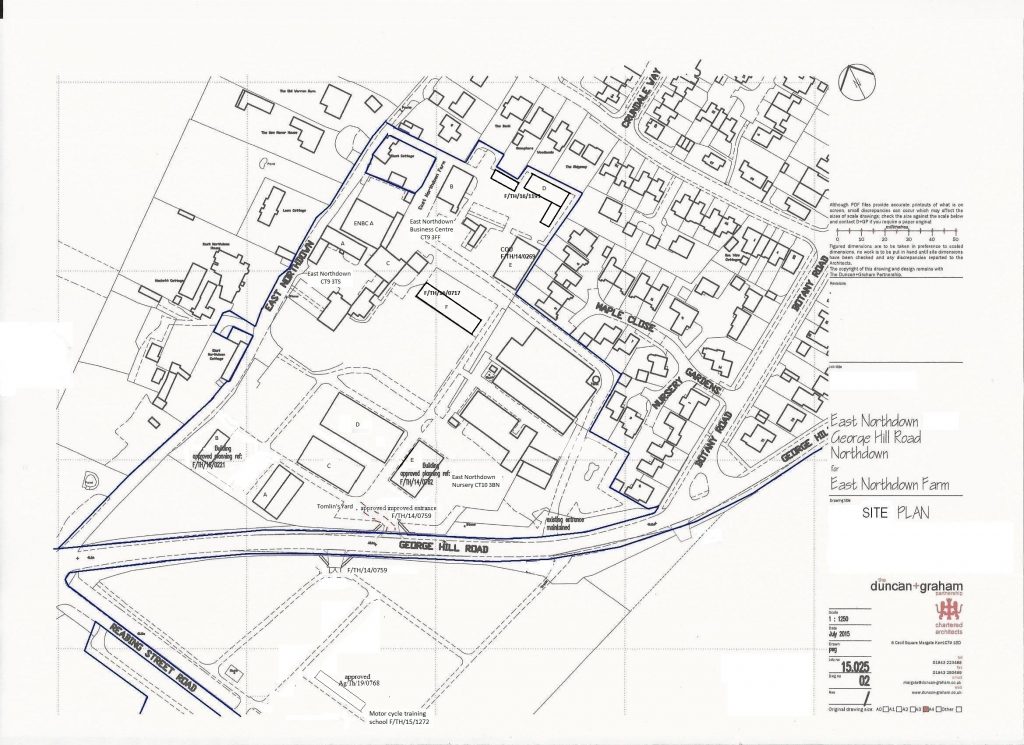
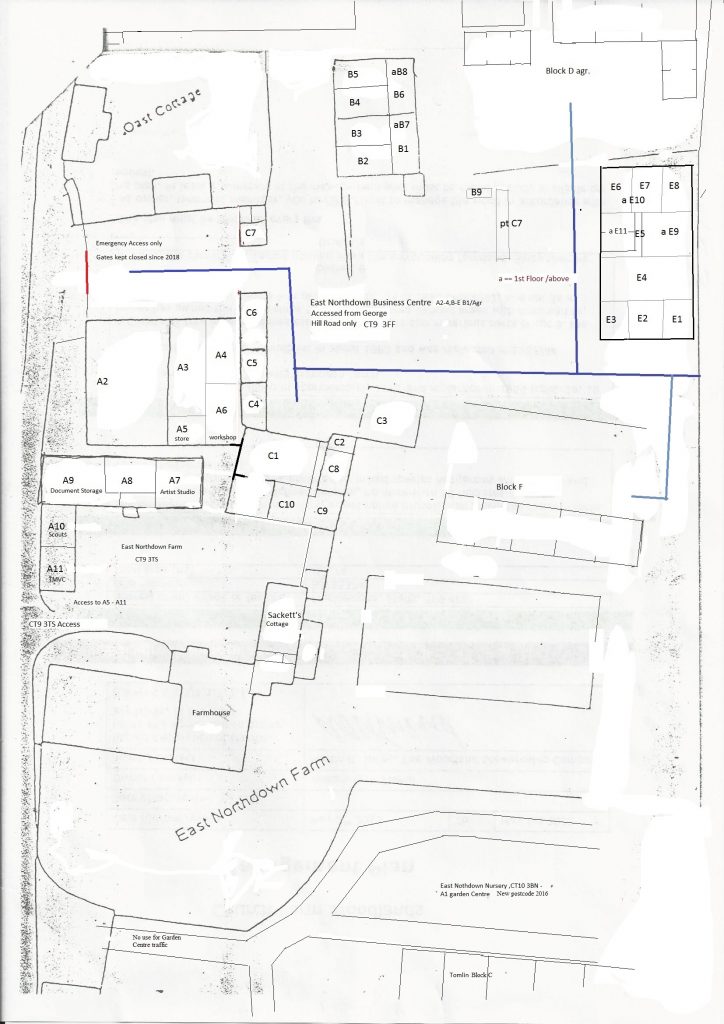 Taddy’s Barn Cafe is thriving under the new management of Dan Curtis, as a front of house venue for visitors to the nursery and Gardens . Louise has been trying to keep pace with mail order and delivery enquiries , during ‘Lockdown’. William’s vision is similar to that at the Israeli biblical Oasis of Ein Gedi. There, the whole Ein Gedi kibbutz is laid out as a botanical garden with a unique collection of dessert and tropical plants from across the world, planted around the whole settlement , providing both a unique living and working environment for the residents, as well as a tourist attraction for visitors, in a legendary natural setting .
Taddy’s Barn Cafe is thriving under the new management of Dan Curtis, as a front of house venue for visitors to the nursery and Gardens . Louise has been trying to keep pace with mail order and delivery enquiries , during ‘Lockdown’. William’s vision is similar to that at the Israeli biblical Oasis of Ein Gedi. There, the whole Ein Gedi kibbutz is laid out as a botanical garden with a unique collection of dessert and tropical plants from across the world, planted around the whole settlement , providing both a unique living and working environment for the residents, as well as a tourist attraction for visitors, in a legendary natural setting . 
Taddy’s Barn at Northdown Nurseries
Now serving Teas and coffees and cakes, hot food etc all at East Northdown Farm. Come and taste!
Fond Memories of a Friend
 Members of the Friend Family, gathered on Sunday (9th Sept.) to celebrate the life of the late Rt. Hon. Lady Mary Crofton TD.
Members of the Friend Family, gathered on Sunday (9th Sept.) to celebrate the life of the late Rt. Hon. Lady Mary Crofton TD.
Mary Irvine (nee) Friend , was born in Northdown House on the 23rd September 1920, eldest daughter of ‘Cpt.’ James Irvine Hatfeild Friend MC DL OBE.
A brief service of dedication of a memorial and of commital of her ashes, was conducted by the Rev. John Richardson, in St. Mary’s Chapel, Northdown.
The Chapel, built by Mary’s Grandparents, James Taddy Friend and Mary Stewart (nee) Irvine celebrated its 120th Anniversary earlier this year. Holy Trinity Church was rebuilt on the adjoining land, donated by Mary and the family, after the original church in Trinity Square, Margate, was destroyed by enemy bombing in WWII.
Mary’s final wishes were that her ashes be returned to her childhood home of Northdown – beneath her favourite Mulberry Tree. Northdown house, park and buildings were given over to Margate Borough by the family in 1937, to be used and maintained as a public park forever, for the primary benefit of the residents of Northdown and Palm Bay.
The readings were Psalm 16, and Philippians 4, 4-7, celebrating in her rich, varied and selfless life, read by her nephew, William Friend, of East Northdown Farm. Mary’s two sons Peter Flach- retired Royal Hussars , and Tim Flach – a renowned photographer, and her three grandchildren all attended , together with cousins, relations and friends.
The Family looked inside Northdown House, which is currently being used by the BBC to film a docu/drama about the allied invasion of Normany. East Northdown Farmhouse is to be used as a ‘Normandy Farmhouse’.
Mary joined the ATS in the summer 1939, aged 18, and served throughout the war, and afterward in the control commission. She was one of only a handful of women, selected to land in Normandy- on D+20, attached to the military police. Monty, thought some women MPs would be necessary to handle female POWs and Churchhill though it would send a positive message out to allies and foes alike, to have women serving in Normandy at an early stage. She was initially based outside Caen, she later moved to Brussels, and then North Germany.
Family reunion inspires couple to recall a member of one of the great families of Thanet

East Northdown Farm Plant Nursery – Farmer’s weekly
THERE’S something different about the plant nursery at East Northdown Farm (Northdown farm plant nursery map). For a start there are no massed pots of tender plants hot off a lorry from Holland here. Instead there are more resilient plants propagated from stock that has been proven to suit chalk soil, low rainfall and drying north easterly winds – conditions they face in the farm’s garden, a mere salty breeze from Margate, Kent.
“A wind is always blowing off the sea here and we have a low rainfall. We have built up a reputation for selling plants that will grow well – the sort of plants that we know do well in our own garden,” explains William Friend who runs the plant nursery with his wife Louise. Louise , a surveyor, changed her career and put her efforts into the fledgling plant nursery when the couple started a family.
William and Louise Friend the owners of East Northdown Farm Plant Nursery
The plant nursery keeps the couple busy seven days a week but they enjoy working together and find it has helped them become more integrated into the local community. “Customers like to be served by us personally and ask how the family is, and they like the fact that we grow most of the plants ourselves,” says Louise.

Louise and Will Friend Owners of East Northdown Plant Nursery
Customers can take a walk round their garden, which is not some clipped and mannered, tidy plot but a wonderful fulsome mix of plants that fills every inch of border and shows the full gamut of growth from bud to seed head.
“People wonder why everything is not dead-headed or clipped back but we want the seeds and we want to take cuttings, divide up plants and propagate things on,” explains William. “People like to look round it, especially on Sundays and we take them to see the plants. Some things are hardy here that will not be elsewhere like euryops (big shrubs with grey or green leaves) and salvias which flower from June to November. Quirky things do well here, such as grey leaved plants that will rot off in the West Country where it is just as warm but wet.”
A lot of Californian plants do well in the garden such as the Californian tree poppy – Romneya coulteri with its papery yellow-centered white flowers and the Californian fuschia. Visitors may spot fragrant myrtle, a hybrid strawberry tree – Arbutus x ‘Marina’ , several varieties of the bottle-brush plant, pineapple broom, sea kale, european fan palm, canary island date palm, Arum italicum, Russian sage, bronze fennel and yellow bay. When Farmlife called the huge purple thistle-like heads of cardoons stood tall in a border as did spires of Acanthus mollis. Peaches were ready to pick and brown figs were ripe to bursting. The Magnolia grandiflora s were sold out as the Magnolia tree outside the farm shop had ensured a run on sales, its gloriously lemon scented, exotic, white flowers set against glossy green leaves having caught the eye of passing motorists.
Most customers live locally or come from nearby coastal towns but the plant nursery gets a lot of Londoners, too, who are visiting relatives in the area. “There is a big Cypriot community in Thanet, and small groups of Neopolitans and Sicilians, who all love coming down to the farm to choose their vines and fruit trees. We sell olive trees, which won’t fruit here, and figs, apricots and peaches, which will,” explains William, “the Persians , are very fond of quinces which they cook in a traditional sweet and sour dish a bit like a ‘mousaka.’ A group of turkish ladies visit me each year to pick vine leaves .
East Northdown Farm Plant Nursery – Farmer’s weekly
“We also sell a lot of our own grown large evergreens and specimen shrubs and are famous for our cordylines and phormiums. We have a lot of retired people round here who feel they can’t wait too long for things to grow! On the other hand they won’t pay silly prices asked for Italian grown specimen plants” William and Louise are happy with their business. “We have invested a lot of time ,money and enthusiasm into our business and feel it is finally paying dividends. Plants have always been my hobby and passion and this shows through. Fellow gardeners recognize that you ‘know your stuff’ which gives us the edge over most our competition.” Says William ,who is an Oxford trained plantsman.

